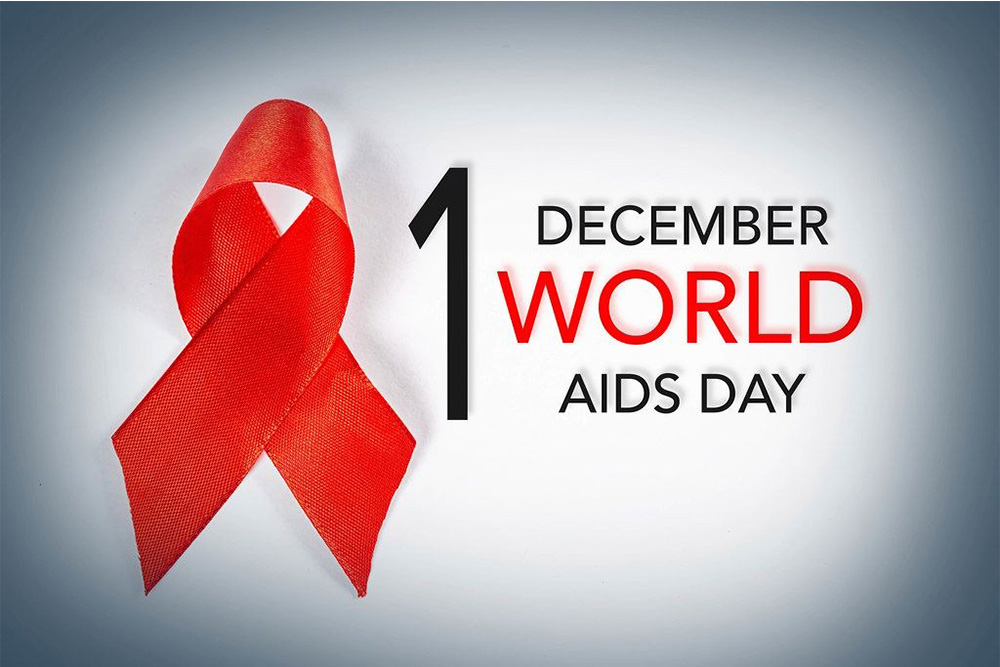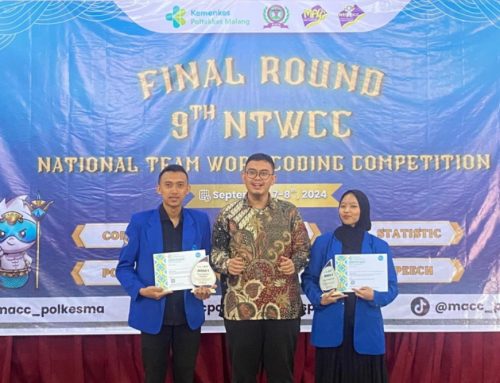
Esaunggul.ac.id, World AIDS Day is commemorated on December 1 every year. This year is the 35th World AIDS Day, since it was first held in 1988. The theme of this year’s World AIDS Day is “Let Communities Lead,” which means “Let the community lead”. So why does World AIDS Day need to be commemorated, and why the theme was chosen, as well as how its history and what are the dangers of AIDS on humans. The following is a summary of the results of a conversation with Prof. Maksum Radji, Professor of Microbiology, Pharmacy Study Program, FIKES, Esa Unggul University Jakarta.
According to Prof. Maksum, World AIDS Day is commemorated annually to raise public awareness about HIV and AIDS and to give attention to people affected by the AIDS epidemic. In addition, the commemoration of World AIDS Day is also a reminder of the struggle of the health world in overcoming various stigmas related to HIV-AIDS and emphasizing the importance of our commitment to ending the HIV epidemic.
“A recent report launched on 28 November 2023 by UNAIDS, Let Communities Lead, shows that AIDS can be ended as a public health threat by 2030, but this elimination of AIDS can only be achieved if communities who are on the front lines get the full support they need both from the government and from other community organizations. The meaning of this year’s World AIDS Day theme is that the world can end AIDS, with communities leading the way. Communities living with and at risk of HIV are at the forefront of progress in the HIV-AIDS response. Communities living with AIDS serve as the main link between people at risk and health services. In addition, the community also plays a role in building public trust, innovating and continuing to be a monitor, while increasing awareness and cooperation of all stakeholders to contribute to HIV-AIDS prevention efforts,” he said.
AIDS Epidemiology
Launching the Let Communities Lead report, UNAIDS Prof. Maksum said that in 2022 there will be around 39 million people living with HIV worldwide, around 1.3 million new cases of HIV infection, and more than 630 thousand people die from HIV-AIDS.
“The United Nations Program on HIV/AIDS (UNAIDS) targets that the world can end the HIV-AIDS epidemic as a public health threat by 2030. This program is known as three zero, namely zero new HIV infections, zero AIDS deaths, zero discrimination against people living with HIV-AIDS (PLWHA). The three zero HIV-AIDS target can only be achieved if the community is committed and actively participates with other stakeholders in overcoming barriers to HIV-AIDS eradication efforts. The role of government and public health service units as well as community leaders needs to be continuously improved to build public trust, as well as monitor policy implementation and maintain accountability of service providers,” he explained.
Prof. Maksum added that according to data from the Indonesian Ministry of Health, HIV cases in Indonesia will increase in 2023. It was reported that the number of housewives infected with HIV reached 35 percent. This figure is higher than HIV cases in other groups such as sex workers and MSM (man sex with man) groups.
The high incidence of HIV cases among housewives can increase transmission from husband to wife. According to the Indonesian Ministry of Health, new HIV cases among housewives increase by 5,100 cases each year. HIV-infected housewives have a high risk of transmitting the virus to their children, either in the womb, during the birth process, or while breastfeeding.
“In general, HIV transmission through the mother-to-child route can account for about 20-45 percent of all other sources of HIV transmission, including through sexual intercourse, the use of unsafe needles and blood transfusions,” he explained.
Pathophysiology of AIDS
According to Prof. Maksum, Human Immunodeficiency Virus (HIV) is generally transmitted through sexual intercourse, the use of illegal drugs, especially injecting drugs, and vertical transmission from mother to baby, during the birth process or through breast milk. The HIV virus is a retrovirus that can cause weakening of a person’s immune system. HIV can infect and damage cellular immune cells, namely T cells, which play an important role in the body’s immune system.
“Human Immunodeficiency Virus (HIV) is a virus that attacks the human immune system, reducing its ability to fight infections and other diseases. HIV attacks one of the cells in the white blood cells, namely T or CD4 cells. These CD4 cells have an important role in maintaining the immune system. If not treated as soon as possible, this HIV infection can cause a very weak body condition so that the body becomes vulnerable to various infections and other serious diseases. This syndrome is called AIDS or Acquired Immune Deficiency Syndrome where the immune system is no longer able to fight microbes that enter the patient’s body. HIV-AIDS is a serious disease that lasts for years and can be fatal,” he explained.
Prof. Maksum added that there are several stages to be aware of in the course of HIV infection:
1. Window period
In this period, although the body has been infected with HIV, blood tests have not found antibodies to HIV. However, in this period a person infected with HIV can transmit it to others, characterized by the presence of HIV in the blood (viral load) HIV is very high and CD4 levels are declining sharply. This period usually lasts about two weeks to three months since the initial infection.
2. Latent period
This period is usually characterized by mild or no symptoms (asymptomatic). The presence of HIV in the body (Viral load) decreases and is relatively stable, but CD4 gradually decreases. Blood tests for antibodies to HIV show reactive results, although symptoms of the disease have not yet appeared.
In this phase, people with HIV can transmit HIV to others.
This asymptomatic period lasts 2-3 years on average, while the period with mild symptoms can last up to 5-8 years.
3. AIDS Period
In the AIDS period, the immune system has decreased dramatically, the viral load value is higher, and the CD4 value is very low, resulting in various opportunistic infections, including tuberculosis (TB), herpes zoster (HZV), oral candidiasis, pneumonia, cytomegalovirus infection, Mycobacterium avium complex (MAC), Toxoplasmosis, and several types of cancer.
The progression from HIV infection to AIDS is determined by the type, virulence of the virus, and host factors. There are three types of HIV infection, namely: rapid progressor, lasting 2-5 years; average progressor, lasting 7-15 years; and slow progressor, more than 15 years after infection.
Prevention and Treatment Efforts.
According to Prof. Maksum, WHO still considers that the HIV epidemic is a major public health problem worldwide. Although there is currently no truly effective cure for HIV infection, the ease of access to diagnosis, prevention efforts, and access to treatment and care can help people with HIV to maintain their health to live longer.
Unfortunately until now, since HIV was first isolated in 1983, no effective HIV vaccine has been found. Therefore, the way to prevent it is to understand how it is transmitted and avoid transmission well. HIV transmission can only occur due to contact with the patient’s body fluids. Contact of these fluids is through blood, sperm, vaginal fluid, fluid, and breast milk (ASI). It should also be noted that HIV cannot be transmitted through air, water, sweat, tears, saliva, mosquito bites, or physical touch.
There are several ways to prevent HIV that can be done, among others, not having sexual relations that are at risk of contracting HIV, especially for adolescents before marriage; faithful to one partner; avoiding drug use, especially injecting drugs together; Education on the importance of ARV (Antiretroviral) treatment, as well as the importance of medication adherence, for HIV-infected people to suppress the presence of HIV in the body (viral load) and maintain the health of HIV sufferers.
“Antiretroviral drugs (ARVs) need to be taken continuously, even for life by people with HIV-AIDS (ODHA). As long as people with HIV routinely take antiretroviral drugs (ARV), the HIV virus can be suppressed replication so that it cannot be transmitted to others. In addition, viral load must always be monitored regularly and periodically so as not to become a source of transmission. UNAIDS in December 2020 set a target of “95-95-95” for the fight against HIV-AIDS. The point of this target is that 95% of people living with HIV know their HIV status; 95% of people with HIV are undergoing antiretroviral treatment, and 95% of people who are undergoing treatment with ARVs successfully inhibit the presence of HIV (viral load) in the body. This “95, 95, 95” target has been proclaimed to be achieved by 2030 globally, including in Indonesia. However, based on the achievement of the target that has been achieved by Indonesia to date, it seems that HIV elimination efforts carried out still need to be increased in order to achieve the target of the three zero program, and the target of “95, 95, 95” in 2030, “he concluded this discussion.
*







